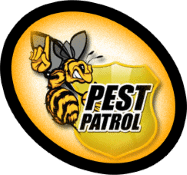Rodent Control in Southeast Michigan
Got mice, rats, chipmunks or more inside your home?Get rid of rodents in your home for good!
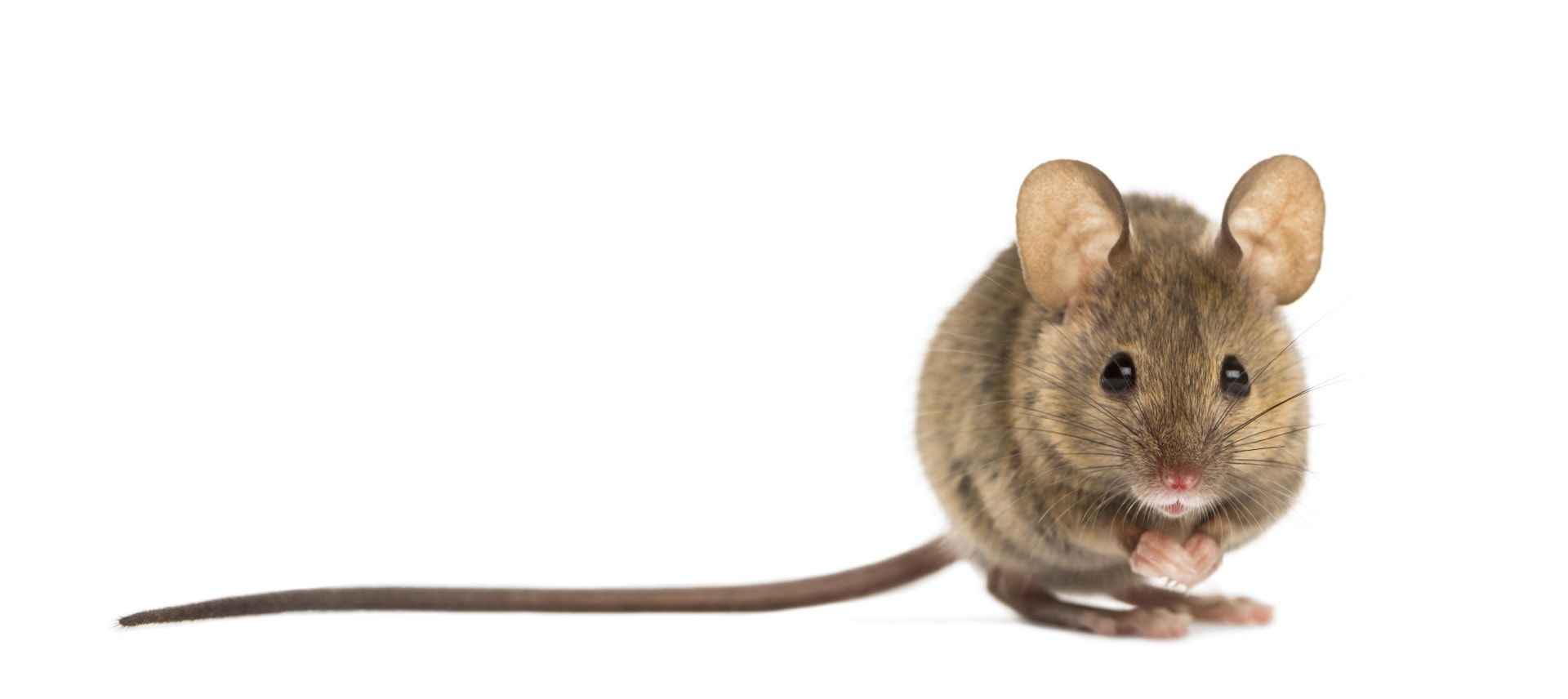
Rodent Control in Southeast Michigan
Got mice, rats, chipmunks or more inside your home?
Think of the pleasures of a cozy evening when the weather is cold, but all is warm inside your home. You may be curled up on the couch, comfortably binge-watching favorite movies or reading a much-loved book. A bowl of popcorn by your side…a refreshing drink…and then you hear it.
Ever so softly, the sound of tiny footsteps scurrying inside the wall. Scratching noises as insulation or wiring gets moved around. Soon, the persistent chewing sound – but not on your popcorn. The chewing is coming from inside that wall next to you.
Without seeing what it is, you know you have a problem.
Rodents can invade your home any time of the year. They’re looking for a cozy, warm place to call home too.
And while they’d love to share your popcorn, they are a little more discrete about their meal locations. They like to eat where people aren’t; and you can probably see evidence of that in the corners of your kitchen cabinets.
Types of Rodents in the Home
In Southeastern Michigan, we typically have a variety of rodents that like to move in when the weather gets cooler. Mice average around two inches in length, but their colors vary. Rats can be around nine inches long and have a blunt nose.
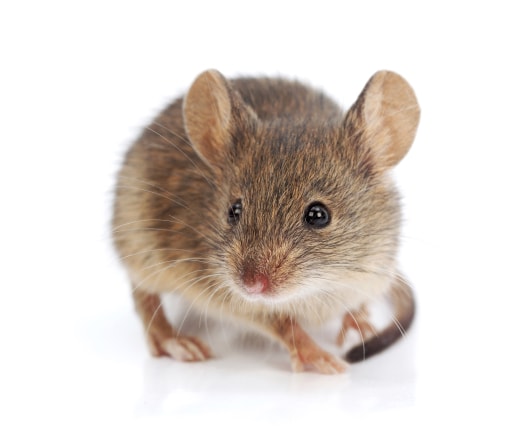
House Mice
- Grey to black
- Small, maybe 6 or 7 inches
- Big ears when compared to body size
- Cute… but not near as cute as deer mice
- Nests in dark areas near food and water sources. These guys like the insulation around appliances like dishwashers and ice boxes for nesting sites. They also like the fiberglass insulation in walls.
- Enjoys the company of other mice
- House mice like to eat anything you like to eat, and a few things you don’t… like cat poop
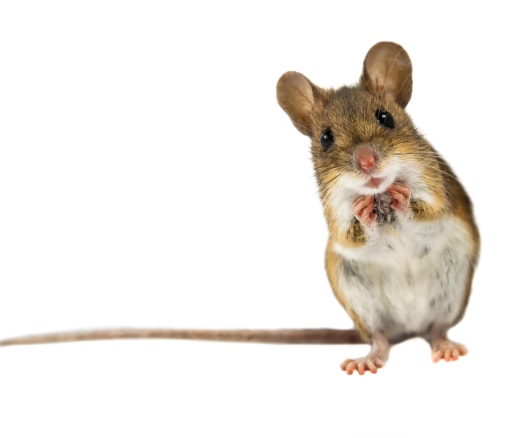
Deer Mice (field mice)
- They are just adorable
- The diminutive deer mouse is only 3 or 4 inches long… so loveable!
- Big-eyed, cute re-curved ears, irresistible white bellies and they taste like peppermint candy. OK, maybe not the last bit… but they are adorable
- These are native to the US, Canada, and Mexico
- They eat fruits and seeds and insects. They like fungi too. A pizza parlor with roaches would be an ideal habitat. But our home generally does just fine
- Nests are in burrows. They dig in and under things. In nature… that’s stumps and logs and under rocks. In your home, that’s in crawl spaces and wood/lumber piles. Also, the blown-in insulation in your walls and attic are appealing home sites.
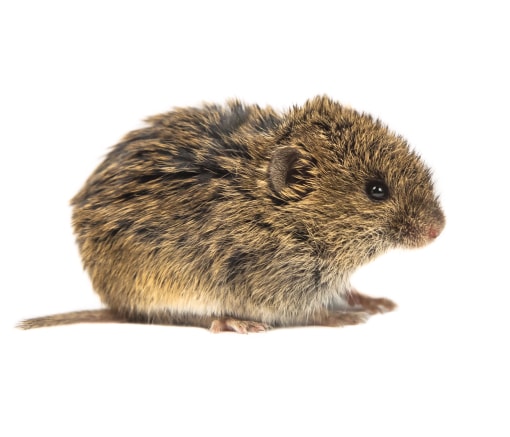
Voles and Meadow Mice
- Voles are small, 4 to 5 inches
- Small black eyes, small ears, short tails
- Almost always dark grey to black
- Seldom do they invade homes
- These guys like to live in your lawn and leave trails under the snow.
- Nests are very much like birds’ nests and are found when the snow melts in the spring. In the summer you can find them at the base of thick shrubs and sometime just underground in the same areas
- If you noticed your yucca plant dying slowly for no good reason… It’s usually voles eating the roots.
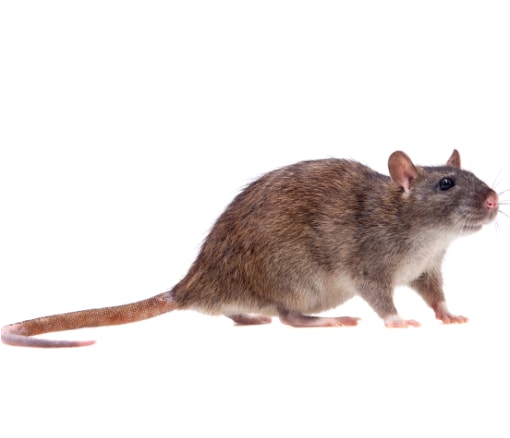
Norway Rats (Sewer Rats)
- More common that you would like to believe.
- Brown mostly but occasionally a bit red brown like L’OREAL 5½AM MEDIUM COPPER BROWN or perhaps 5CB MEDIUM CHESTNUT BROWN hair color from the Paris collection.
- Big ears
- Good sized rat, up to a foot and a half long
- Eats anything and everything
- Nests are burrows in the ground under foundations and sheds and in crawlspaces.
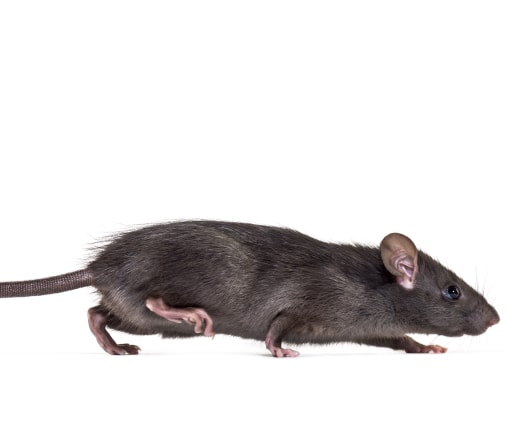
Roof Rats
- Black to an attractive charcoal-grey
- These are the rats that brought us the black plague
- Nests, as the name implies, are up there somewhere. In attics, rafters, and even in trees
- Long tails and long-nosed and big-eared and dang near a foot and a half long. They would appear a bit comical if it weren’t for their impressive size and the fact that they are… you know… rats.
- Roof rats prefer fresh fruit and vegetables but will eat most anything. Oddly enough, they really like to eat slugs and snails. Perhaps they are French…Bon Appétit!
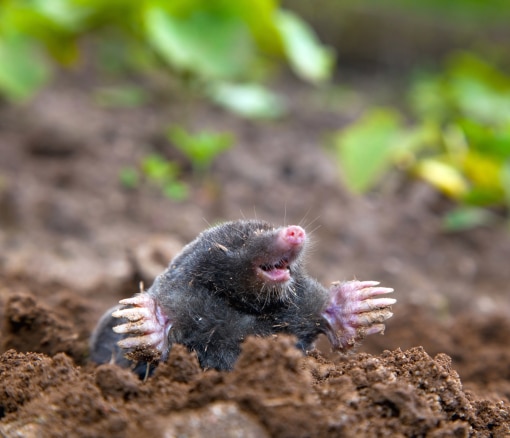
Moles
- Moles really need no introduction
- Subterranean, almost blind, tiny inconspicuous ears, and a crummy little tail.
- On the plus side, they have incredibly soft fur of a beautiful mid grey color
- Moles are a bit of an evolutionary marvel. Their front legs have become big and strong with feet that are like shovels that allow them to tunnel and pull themselves through the soil. The back legs are much smaller and have paddle-like feet for pushing themselves forward
- They eat worms and grubs
- Nests are underground chambers. These chambers are places above deep tunnels. These chambers are built in such a way that even if the tunnels flood, the chambers will remain dry. So sorry, you are unlikely to drown them with a hose.
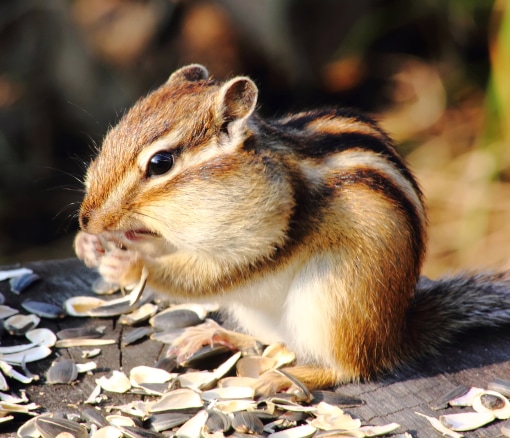
Chipmunks
- Chipmunks are a native creature and our chipmunks are the Eastern Chipmunk.
- Although rodents… they are more closely related to squirrels and wood woodchucks than mice or rats.
- They do invade homes and building.
- They cause damage by chewing through wood, insulation and electrical wires
- The eat nuts and berries and seeds and mushrooms
- They are known to sing Christmas songs and are clearly monks, but they do not seem to belong to any particular religious sect
- In nature, their nests are in burrows in long tunnels. Some chipmunks maintain up to 30 feet of tunnels; and the tunnels are shared by other chipmunks and sometime mice. Chipmunks will also use mole tunnels to move around unseen.
- In homes, they usually nest in attics and crawl spaces… however in seasonal homes and cottages, we often find them living in linen closets with nests made of toilet paper.
- Chipmunks store a great deal for seeds and nuts near the nests. Often weevils and beetles emerge from this food cache and move into our pantries and kitchens to eat our boxed and bagged foods, causing a secondary infestation.
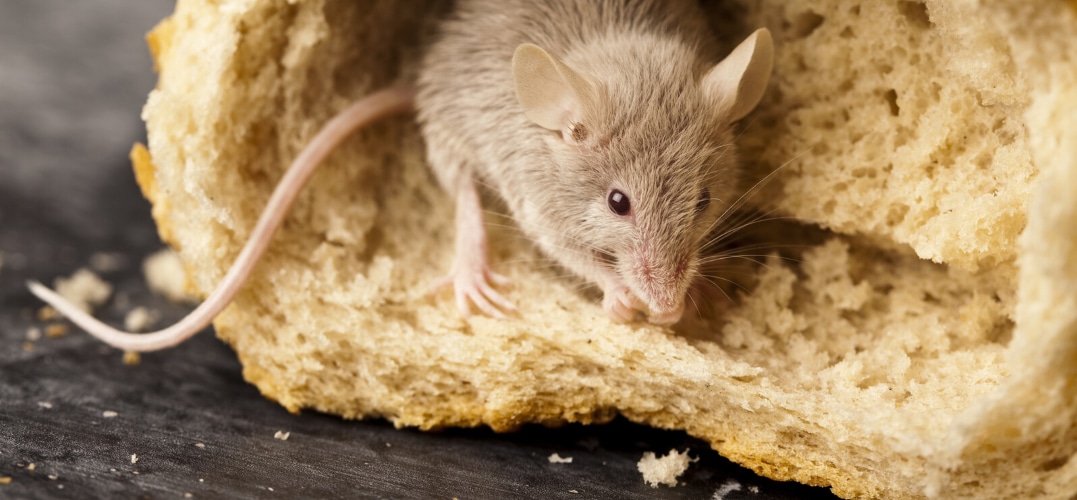
Signs of Rodents in the Home
Having them move in can happen to anyone. It doesn’t mean you have a dirty, filthy home that is attracting rodents.
Rodents are explorers and scavengers. They like to wander around, looking for shelter, food and water. They’d much rather cozy up inside your warm house than in that cold, drafty shed in your back yard that holds your smelly lawnmower.
How do you know you have mice in your home, or any other rodents?
The obvious indications are those scurrying, gnawing noises you hear inside the walls. Sometimes, you may see little tiny footprints left in a dusty corner or walking through a beverage spill that wasn’t noticed.
You might also see little bites taken from food left out.
Mice can eat as often as 20 times each day, and they like a variety of foods. Cheese isn’t really their diet – where would they find cheese out in the wild? They like grains, nuts, fruits, vegetables, pet food and sweet things. When hungry enough, they will eat just about any type of food.
Droppings? These you will notice. What goes in, must come out. Mice can produce around 75 rice-sized pellets each day. Rat droppings are larger, about a half inch long, and wider.
How Rodents Get Inside a Home
They are small creatures, but they can fit through some amazingly small spaces.
A hole as small as a nickel is perfect for a mouse to squeeze through; while a rat can fit through a hole about the size of a half dollar. Think of the foundation and attic of your home, and places between…is everything sealed up well?
Gaps outside your home that are inviting to rodents include:
- Holes in the foundation
- Weep vents in brick buildings
- Attic vents and crawl space vents
- Near the roof by the soffit, rafters and eaves
- Roof vents
- Loose bricks in the chimney
- Around holes for utility, HVAC and water lines
- Around dryer ventilation
- Under doors or around window frames
Where do Rodents Hide?
You may not see them directly. They run quickly, scurrying alongside the wall, under registers, or towards the back of cabinets.
Check underneath the upholstered furniture. If there is a small hole in the lining, there may be a rodent nest inside. They may also live behind large, heavy pieces of furniture. You wouldn’t normally move these items much, so they’d feel safe behind them.
The space underneath the kitchen cabinets is a handy highway for them to travel between food sources. All those storage boxes in your attic or basement are ideal locations to hide. They like heat sources, so check the utility room, near the clothes dryer, and behind the refrigerator.
They will also tear up insulation, spare blankets, clothing, and other soft material to make a nest. Check to see if any of these have been shredded.
Chipmunks like to burrow inside your wall, stashing the food they’ve collected all season. They don’t go into a deep hibernation, so you may hear scratching and skittering around. But they are pretty content staying near their own food source.
Hazards of Rodents to the Home
Remember that tiny chewing sound you heard inside the wall? Who would think that one tiny creature could cause much damage?
Chewing is important to a mouse, to keep his incisor teeth trimmed short. These teeth don’t have roots, and they are always growing. So, chewing on things helps with dental hygiene for the mouse. Every 35-45 days he wears down and renews the four front teeth.
But mice can chew through soft concrete, wood, drywall, rubber, plastic pipes, insulation, aluminum, and even gas lines. Imagine the fire hazard of chewing through an electric wire or gas line. Or the slow, continuous leak if a water hose has been bitten.
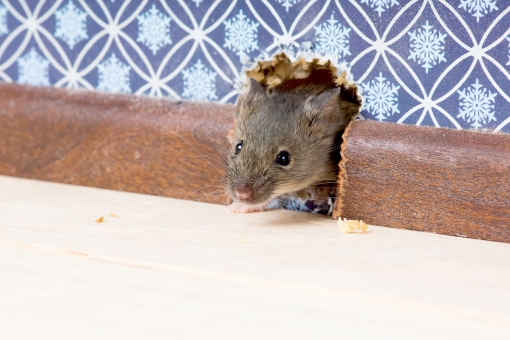
Health Hazards from Rodents
Those tiny little feces droppings you noticed can contain an infectious virus. That’s why the Center for Disease Control (CDC) recommends a specific clean-up protocol of rodent urine, droppings, and nesting material.
At a minimum, they recommend spraying the area with a commercial disinfectant or mixture of bleach and water and letting it sit for five minutes before using paper towels to wipe the area clean.
Rodents carry bacteria that can contaminate your food as they scrounge and leave droppings or urine. People with asthma may be more susceptible to the effects of rodent contamination.
Hantavirus and Lymphocytic Chorio-meningitis (LCM) are two viruses spread by breathing in dust that is contaminated with rodent urine or droppings. Direct contact with the urine, droppings, or saliva, or a bite from a rodent carrying the virus can also spread it.
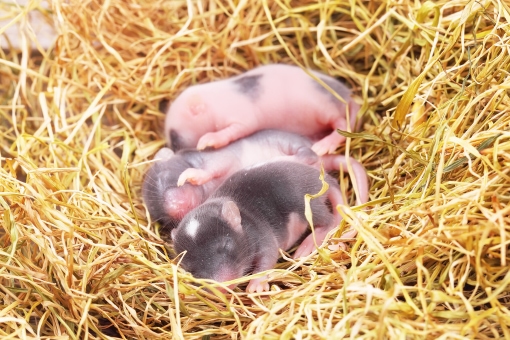
The Best Way to Get Rid of Rodents
When you see one rodent, there are probably more hiding around. Probably many more than you initially imagine.
A mouse can reproduce every 21 days and often gives birth to up to ten youngsters at a time. Those babies are mature enough to start mating within six weeks. So, they also reproduce every 21 days…and the cycle continues.
While you may successfully trap one mouse, don’t think that’s the end of the population.
Be proactive and check over your home each season to be sure you aren’t inviting rodents inside. Get rid of unneeded boxes, papers, magazines, etc. that might be used for nesting materials. Store food in airtight containers with tight seals.
How Do You Trap a Rodent in Your Home?
There are a couple of ways to catch the nasty little guys; either by trapping or baiting.
Most homeowners are familiar with using mouse traps; but if you have a rat problem, they’re probably laughing at the tiny little contraption. So, it’s best to understand what rodent you have, and use the appropriate tools.
Mice are afraid of open areas, so they like to run alongside the walls, under cabinets, behind the stove, etc. This is where you should place the traps. Remember how many babies are born, and how quickly reproduction occurs? Set out more than one trap if you want to be effective.
The baiting method requires knowledge about the poison used and best placement for success. It’s best to rely on a professional exterminator when baiting is required.
In baiting, the rodent eats some of the poison, and goes about his normal routine. While the poison will kill him, you won’t know where he’s died – until you notice a dead rodent odor. Dead carcasses can also attract other pests and insects, causing additional problems.
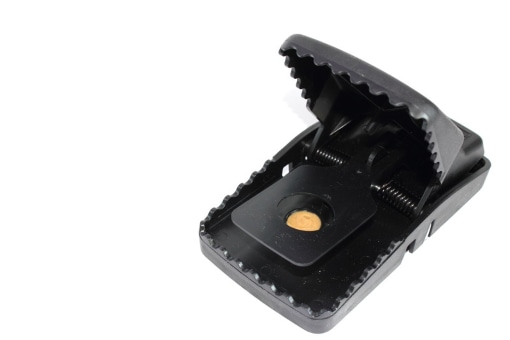
Add just a tiny bit of peanut butter to the trap. They like that better than cheese, and it doesn’t require a massive amount to do the job. If you load the trap with too much bait, they could steal some without setting off the trap.
Professional Rodent Control Steps
Each rodent situation is different. So, when we receive a request for help with these critters, we start with an interior pest inspection to determine the type of rodent. We also investigate to see where they are feeding, nesting, reproducing and traveling.
Our assessment determines how extensive the problem is, and what type of treatment is needed. Sometimes, more than one treatment is necessary. But we want to be sure the rodents are eliminated. Call us now to get rid of rodents in your home.
